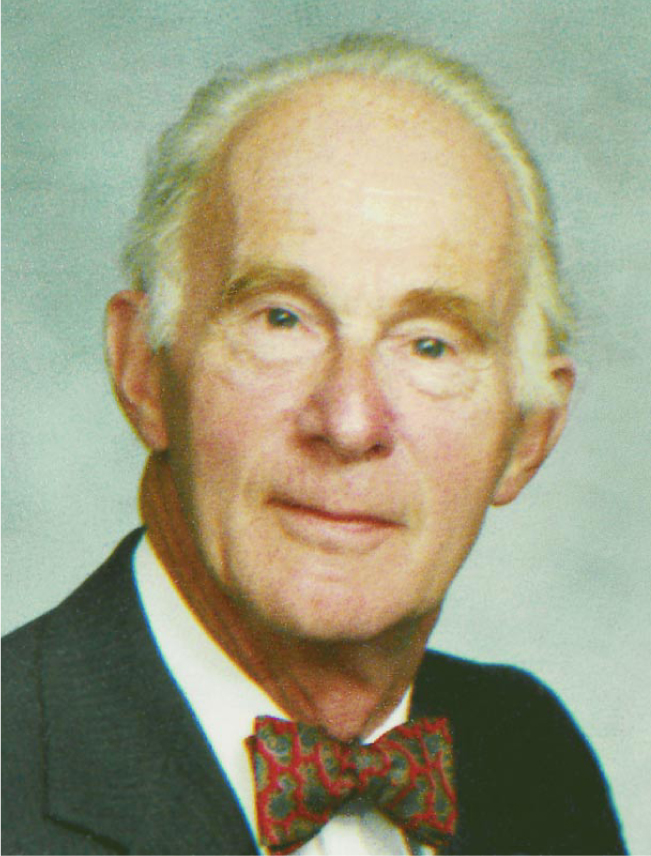Richard Edward Honig
DOI: 10.1063/1.1496384
Richard Edward Honig, a physicist who spent his career at RCA Laboratories in Princeton, New Jersey, died of cancer on 31 July 2001 in Haverford, Pennsylvania. He investigated the vaporization of solids and was a pioneer in the design of mass spectral techniques for the characterization of solid surfaces.
Rick was born on 4 June 1917 in Göttingen, Germany. In 1933, his father, a professor of law at Göttingen University, moved the family to Istanbul, Turkey. There, Rick attended Robert College and graduated in 1938 with a BS in electrical engineering. He went on to MIT, receiving his MS in electrical engineering in 1939 and his PhD in molecular physics in 1944. His thesis at MIT, prepared under the guidance of Clark Goodman, involved mass spectrometric studies of light hydrocarbons.
During Rick’s years as a graduate student, his interest in mass spectrometry emerged and developed into a passion that he would sustain for the rest of his life. After a brief four-year stint at Socony-Vacuum Oil Co (the predecessor of Mobil Oil Corp) in Paulsboro, New Jersey, Rick joined the research staff at RCA’s David Sarnoff Research Center (now the Sarnoff Corp) in Princeton in 1950. In 1951, he proposed studying the physical sputtering process using a mass spectrometer. With the help of RCA’s extensive machine shop capabilities, Rick constructed a 180° magnetic sector instrument. Thus began a long and productive period in Rick’s career during which he conducted fundamental experiments in secondary ion mass spectrometry (SIMS). In addition to SIMS, Rick used his early mass spectrometer to study the vaporization of many elements of interest to the electronics industry during the 1950s.
During his sabbatical (1955–56) at the Free University in Brussels, Belgium, Rick continued to pursue his interests in the mass spectral characterization of solids vaporization.
Rick’s concern with vapor pressure prompted him in 1957 to evaluate the information available at the time and publish the assembled data in chart form, which he updated in 1962 and 1969. His “vapor pressure charts” were instantly popular and continue to be displayed in many textbooks and laboratories throughout the world. His fundamental interest in solids analysis took his research into the areas of spark source mass spectrometry and laser desorption mass spectrometry. Rick and his RCA colleagues made many original and significant contributions to these fields as well. Among these are energy distributions of ions formed in the radio frequency spark source and the response of ion-sensitive plates for mass spectrography.
Rick became head of RCA Laboratories’ newly reorganized materials characterization group in 1966 and held this position for the next 16 years. He built the group, directed its research, and promoted the careers of the group’s professional staff and technical associates. Under Rick’s leadership, RCA developed one of the most advanced and well-respected materials characterization laboratories in the world.
Rick was an active participant in the activities of the American Society for Testing and Materials during the 1960s. He also was one of the founding fathers of the American Society for Mass Spectrometry and served as the society’s first vice president for programs (1968–70) and as its second president (1970–72).
As a young man, Rick especially enjoyed gymnastics, ice skating, and tennis. In his later years, he enjoyed day outings and hiking with his family in the mountains of Switzerland and his native Germany. A longtime resident of Princeton, he was chairman of the language committee at the Princeton Adult School for many years.
Rick’s friends and colleagues remember him with the greatest admiration and deepest appreciation for a lifetime devoted to the pursuit of scientific truth. His family and friends sorely miss him.

Richard Edward Honig

More about the Authors
Bryan L. Bentz. 1 Sarnoff Corporation, Princeton, New Jersey, US .
P. Jane Gale. 2 Bristol–Myers Squibb Company, Princeton, New Jersey, US .
